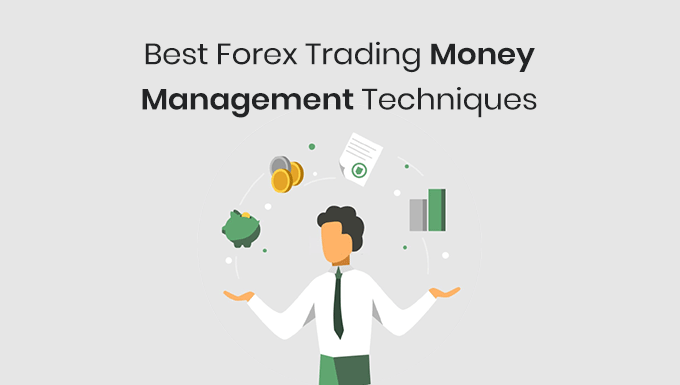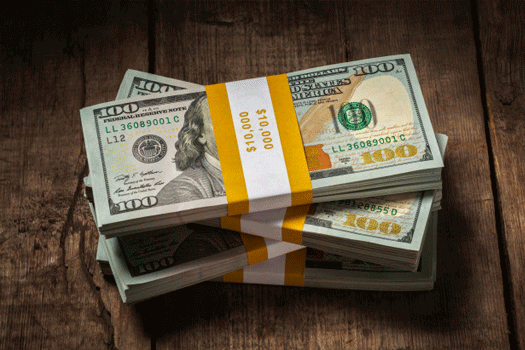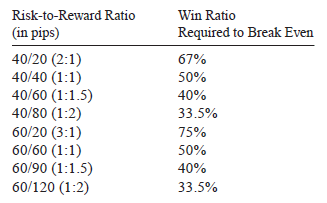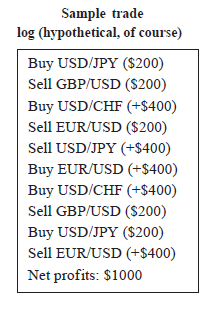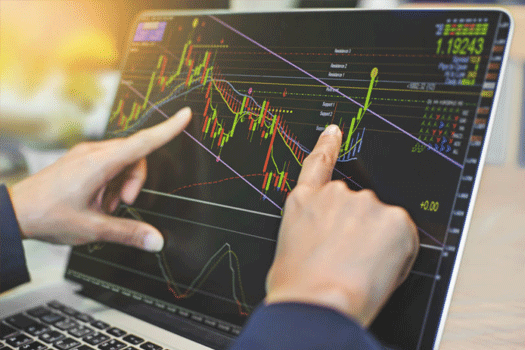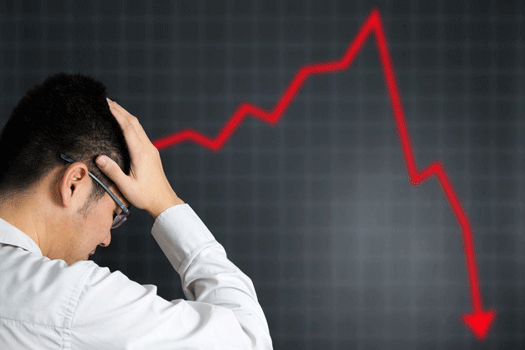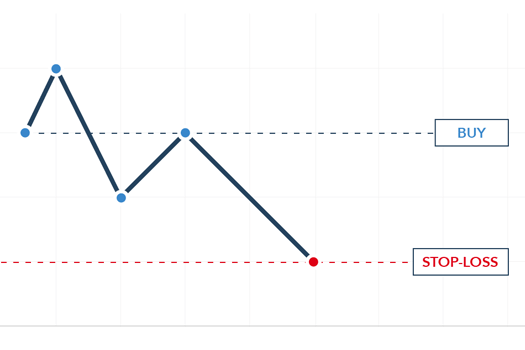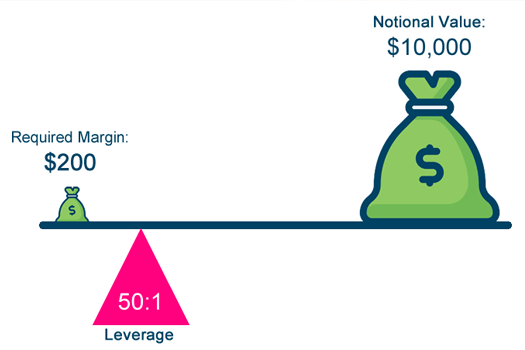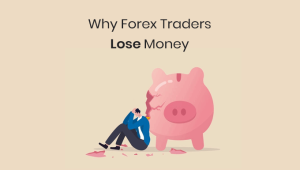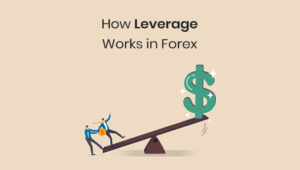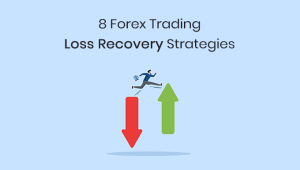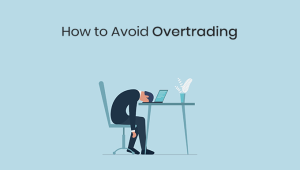Money management refers to a set of techniques used to increase profitability, cut down losses, and grow your trading account.
The application of good money management techniques plays a critical role in any trading plan. Sadly, most traders don’t understand how important it is and end up blowing their accounts as a result.
Without proper money management strategies, trading would be like gambling in a casino. Even the best trading strategy will yield poor results by ignoring the basic principles of money management.
To help avoid losing money and to become a successful forex trader, I have compiled a list of 13 money management techniques that every trader must know.
2. Exercise Discipline
3. Be Patient and Persistent
4. Calculate Risk-to-reward Ratio
5. Follow Trading Rules
6. Accept Losses
7. Always, Always Use Stops
8. When in Doubt, Stay Out
9. Never Overleverage Your Account
10. Make Realistic Goals
11. Always Trade With Money You Can Afford to Lose
12. Protect Your Profits
13. Keep a Trading Log
1. Trade with Sufficient Capital
One of the worst blunders that traders can make is attempting to trade without sufficient capital.
This does not mean that you have to have a lot of money, but you have to have enough to handle the market movement or increase your chance of getting blown out.
The trader with limited capital will not only be worried, always looking to minimize losses beyond the point of realistic trading, but he or she also frequently will be taken out of the trading game before he or she can realize any sense of success trading the system.
Many brokers set a minimum required amount to open a Forex trading account. But I recommend that you start with $5000 to $10,000 in a regular account. A mini account can be opened with as little as $200 if more capital is not available; however, I recommend opening a mini account with at least $1000.
How much capital you risk depends on your account size, but as a general rule, don’t risk more than 1% of your account on a trade. In other words, don’t lose more than 1% of your trading account on a single trade. For example, if you have a $10,000 account, you can lose up to $100 per trade.
A standard account is most often referred to as a 100k account that allows you to trade with lot sizes equal to $100,000. Each lot is worth $100,000 in currency. It will take $1000 to trade one lot. This is a 1 percent margin.
You can change the margin amount to whatever you feel most comfortable with from a risk perspective. When you open your account, you should determine the default margin or get one with a greater or lesser degree of risk than you are willing to accept. I personally recommend trading with 0.01 lot size per $1000.
If you start at a 2 percent margin, it will cost you $2000 to place a one-lot trade. As currency moves in percentage in point (pip), and in a regular (100k) account, each pip is worth about $8 to $10. This is different in a mini account.
A mini account was introduced to accommodate the beginner traders to enter the currency market using smaller size (mini lot) positions and trading quantities, thus lowering the funds at risk and limiting potential losses.
A mini account uses a different leverage calculation than a standard account. Instead of a lot controlling $100,000, the mini account allows traders to enter into contract sizes of 10,000 base currency units rather than the 100,000 units of a standard lot.
Likewise, the percentage in point (pip) movement cost or reward is smaller, at $1 instead of the standard $10 per tick. Some platforms now offer even smaller, micro-lot Forex trading at 1,000 lot sizes and nano lots of just 100 units.
On average, pips in a mini account are worth $1 instead of the $10 in a regular (100k) account. This provides investors of all types with an easy way to get started trading in the Forex.
2. Exercise Discipline
Discipline is probably one of the most overused words in trading education. However, despite the cliché, the trading discipline continues to be the most important money management technique one can master to become a profitable trade.
Discipline is the ability to plan your work and work your plan. It is the ability to give your trade the time to develop without hastily taking yourself out of the market simply because you are uncomfortable with risk. Discipline is also the ability to continue to trade your system even after you have suffered a loss. Do your best to cultivate the degree of discipline required to be a world-class trader.
3. Be Patient and Persistent
Many traders become very disappointed when they do not achieve immediate success.
Be consistent in giving yourself enough time to succeed. Persistence is one of the most important qualities a trader can have.
Short-term trading requires the ability to continue even when your trading results are not good. Some of a trader’s greatest successes occur right after a string of losses. Those who quit too soon or apply their system haphazardly will not be trading in the market enough to allow their system to produce the wins they are looking for.
To develop persistence, you must force yourself initially to do everything according to the rules of your trading method or system. Follow through on this commitment, and you will find that after you have taken every trade according to your tested system, your consistency will have paid off, and you will have profits to show for your efforts.
4. Calculate Risk-to-reward Ratio
Most beginner traders believe that a good entry into the market is the key to success. Unfortunately, most are very wrong. Money management is by far the most important factor of trading, no matter what you are trading. Every successful trader will agree that managing your trades correctly is the number 1 key to consistent profits.
A risk-to-reward ratio compares the potential for reward against the potential for loss. A trader must view his or her trade as a business transaction. Risk is identified by counting the pips between the forecasted entry price and the forecasted price to exit the market in a losing trade. A reward is identified by counting the pips between the forecasted entry price and the forecasted price at which one would exit the market in a winning trade.
To manage risk effectively, it is necessary to find high-probability trades with a 1:1.5 or greater risk-to-reward ratio.
This depends largely on the time frame you are looking to trade forex.
The longer time chart, such as a day, week, or month, requires you to be willing to accept a larger drawdown.
For example, if you are using an active setting and your profit potential is only 30 pips, you may want to set your stop loss at about 15 pips from entry. However, with a longer time frame, your profit potential will be 200 pips, and you will need to set your stops at around 100 pips.
You need to set larger stop limits with a longer time frame because small trends occur with large trends. A retracement on a short time interval is much smaller compared with a long-term interval. Your trade will recycle, and for you not to be stopped out, you have to absorb the loss of the recycling. Therefore, you need to calculate the risk-to-reward ratio appropriately.
Traders agree that the most important thing, next to maximizing profits, is minimizing losses. Yet precious little is actually written about this vital aspect of trading. A trading system or method that wins only 50 percent of the time can still be extremely profitable.
Now I can hear most of you saying to yourselves, “How can you make the huge returns if you are only profitable 50 percent of the time?” It is really very simple – money management.
You see, if you can manage your money effectively, you only need to be right about 50 percent of the time. The unfortunate thing about 90 percent of today’s traders is that their primary focus is on making money and not protecting what they currently have.
You have a 50/50 chance of the market going your way just by flipping a coin. If a trade does not develop in a reasonable amount of time or the market begins to form an opposite setup, you should employ the strategy of cutting your losses short of protecting and preserving your capital.
In short, you cut your losses short and let your winners run. This simple strategy lets 50/50 trading earn a profit when a novice trader might experience a loss.
The following table shows possible risk-to-reward ratios and the win ratios required to break even in a trading system.
To use risk-to-reward ratios effectively, you must study the method you plan to employ and then backtest the system and determine how accurate it is. When backtesting, consider that market conditions change from period to period and therefore that you must take strong trends and non-trends into account. Then it would help if you evaluated how much you can risk per trade based on your trading account.
Typically, you should not enter a position with more than 10 to 15 percent of your cash position and a stop loss of no more than 3 to 5 percent of your account. Find the right balance for yourself in the beginning, and you will be a step ahead of the game.
The trade log shown above notes that the trader has made 10 trades. Half the trades are successful, and half the trades are not. In the end, however, because the trader has cut his or her losses short, the account winds up with a $1000 trading profit, all because of good money management techniques.
5. Follow Trading Rules
The proper execution of trades is one of the most important money management techniques for becoming a profitable trader and one of the most difficult to learn. The problem comes with the initial analysis of a market. When you are studying examples of past trades, it is much easier to recognize direction, entries, and exits than if you are trading live.
Recognizing opportunity in the “now” is much more difficult to do. To develop this skill, you must pay very close attention to specific price patterns and the chart positions of indicators.
Following trading rules and a trading system is no easy task. It requires discipline for a trader to obey the rule that they are following even when the initial response or the opening trade does not work out. Trading rules are not perfect, and they will all fail you at times.
The successful trader learns to overcome the emotion and continue to follow the rule that he or she believes in, knowing the odds are now in his or her favor. Trading should occur only when the right setups are present and when confidence is high.
6. Accept Losses
Losses are going to happen in the course of trading. Since no trading system is 100 percent accurate, even the flawless application of a trading system will create some losses. Develop the ability to admit to your losses.
Sometimes traders will remove their stops and let their losses run. They do this because they are unwilling to admit that their forecast of market direction or their timing of entry into the market was incorrect.
Losses occur primarily for two reasons. The first is when the trader fails to follow established tested rules and guidelines of a trading system. The second is when the trading system fails to encompass unexpected changes in market conditions. In either case, by anticipating the reasons for most of the losses you will take, you can put precautions into place beforehand to help reduce losses in the future.
7. Always, Always Use Stops
Stops are orders in the market placed a distance from your entry price if market prices turn and move dramatically opposite the anticipated direction. The idea behind setting a stop loss is to prevent a loss from “running” too far and thereby consuming excessive capital in one single trade.
Too often, traders are so convinced of where they believe market prices are headed that they lose their sense of reality and begin to trade on hope. They choose not to trade with a stop or remove their stop, hoping that market direction eventually will turn their way and their loss will turn into a win.
By the time the realization comes that the market or position will not move upward and that their hope was an illusion, they have risked far more than they wanted to at the outset of their trade, and the result is a devastating, excessive loss. Be wise and follow the experts: Always use stops.
Most traders in the past, even the greatest ones, have always suffered the most in a time of quick uncertainty, such as the September 11 terrorist attacks in New York and Washington. Catastrophic events will have a tremendous effect on the market. Using a stop will allow you to be taken out of the market and sit on the side until things even out a bit. You can always get back in, but once all your money is gone, it is gone!
These strategies are not just for the Forex. They are good for all markets that you trade. If stock traders were to follow the same strategy of using stops, most of the traders I have spoken with over the last few years would have been far better off and had more capital to enter the market again.
8. When in Doubt, Stay Out
If you come to a point in your market analysis in any trading session where you have no confidence about an accurate forecast of market direction, simply choose not to trade. The old saying, “A lost opportunity is better than lost capital” is true.
In such cases, wait for market conditions to become clearer and increase the probability of success by trading when trade setups are strong. This is far more important to understand in the Forex than in the stock market.
The Forex moves a lot more, and the leverage allows you to have the opportunity to make a lot more money much faster. Therefore, if you do not see the opportunity to get in, you can afford to sit on the sidelines. Learn to be a patient trader and let the market come to you.
9. Never Overleverage Your Account
Leverage is another key money management technique to making money in the Forex. No other market in the world allows the leverage that this incredible market offers. Normally, 100:1 leverage is the amount that most brokerages allow investors to trade with. For each $1000 that you put up in cash, the brokerage allows you to control $100,000 worth of currency.
Think about this for a moment. It is really incredible. The broker has loaned you $99,000 secured only by your $1000. This huge leverage allows you to make the kinds of returns that Forex offers. However, it also enables you to lose some or all of your money if you trade foolishly.
Leverage is a wonderful moneymaking tool, but when it is abused, it can lead to financial destruction as well. Think about consumer credit cards, for example. The bank lets you borrow large sums of money on your word that you will pay it back, but it can lead to bankruptcy for many when credit is abused. Therefore, just like managing your credit card debt, you need to manage your trading leverage.
Most people would not go out and rack up a huge debt that they knew they could not pay because it would not be responsible, right? Well, when trading the Forex, if you started with a $10,000 account, should you start by trading 10 lots using all your cash? No, that also would be foolish.
A very conservative yet very effective trading method is to never leverage more than 20 percent of your account at any one time. Thus, with $10,000, you really should only trade two lots. Using good money management and discipline, you could quickly grow your account in a relatively short amount of time.
The compounding factor of money is a very powerful thing. Because many people desire to get rich quickly, they take unnecessary risks and tend to focus more on the dollar signs than on proper trading principles.
If you truly want to make consistent profits and exceptional returns on your hard-earned money, take it from someone who has been there: Follow these simple but effective money management techniques.
If you start with a mini account, start by trading only one position of a tenth of a lot. You will not make huge money because the position size is only one-tenth of a normal account, but the percentage of returns will quickly allow you to start trading larger sums of money and, in the end, will allow you the success you seek.
10. Make Realistic Goals
Emotions and money do not mix. Simply treat each trade as a business transaction and don’t get emotionally attached to a trade. When you have a loss, take it and move on. Don’t beat yourself up over it.
Learning how to lose is probably more important than winning because a new trader typically will take the first loss, wonder what he or she did wrong, and then sit on the sidelines and let all the profitable trades go by.
As we discussed earlier, discipline is a key factor in trading, and it is a learned trait. It takes a bit of time to get used to, so accept your losses and move on. Once you have proven it to yourself, trust the software or trade system you are using to take you through the winning trades.
11. Always Trade with Money You Can Afford to Lose
Trading with money you cannot afford to lose is a very foolish thing. But yet it is common among beginning traders.
Be sure to trade only with money that will not affect your lifestyle. You are trying to improve your lifestyle, not hamper it.
When a trader trades with money that he or she can afford to lose, he or she tends to be more focused and more disciplined. Such a trader is not worried about any single loss. Simply, he or she is looking forward to the overall return.
Don’t borrow money to trade on. Don’t use your life savings. And don’t use the money that you would use to pay your monthly bills. This is just a road to disaster.
Traders who do this have the same mentality that gamblers have.
Remember this: Traders are not gamblers. If you must compare trading to gambling, then compare yourself to the casino owners. As a disciplined trader, you trade with probabilities on your side so that in the end, like the casino owners, you will come out way ahead.
12. Protect Your Profits
Protecting your profits is another money management technique that helps to ensure consistent success.
If you are a longer-term trader, such as a swing trader or position trader, it is important to protect your profits using a trailing stop loss. For example, let’s say that you are taking a long position (buying) in the USD/JPY, and you are looking for a larger return than $400. Now let’s say that your goal is $800 rather than $400, and you are currently sitting at a $500 profit.
Most professional traders would take this opportunity to trail their stop loss to at least an even position or, better yet, to lock in a portion of these profits so that they have no chance of taking a loss. Remember, however, that your goal is $800 or a loss of, let’s say, $400, a 2:1 risk-to-reward ratio.
Let’s assume that the market, for whatever reason, starts making a large move against your position. If you protected at least a portion of the trade or moved your stop to a breakeven position, then you would have avoided at least one loss that you were not willing to risk in the first place.
13. Keep a Trading Log
Keeping a log of trades is like taking a snapshot in time.
You will find that after making your first analysis, market conditions develop so rapidly that it can be difficult to remember exactly what you saw in the beginning that caused you to enter the market. By recording just a few notes about each trade you make and the technical picture you see, you will sharpen your skills in recognizing strong trade setups.
As a convenience, most trading software keeps track of all the detailed information of your trades, including times, open prices, closing prices, and so on. A detailed trading log, along with good trading software reports, offers the trader a complete picture of trades for later analysis.
Trading the Forex, as you can see, has a tremendous amount of possibilities. You have to use good common sense when you trade. This market moves so much that you will not sit in a trade and watch it do nothing.
You often will see currency pairs trade in a sideways market, whether big ones or short ones. Practice good money management and use good risk management, and you will see the opportunities transpire.
Conclusion
As you can see, money management in Forex is an essential component in trading that you should take seriously. So, try to implement these 13 money management techniques to grow your trading account and maximize profits.
